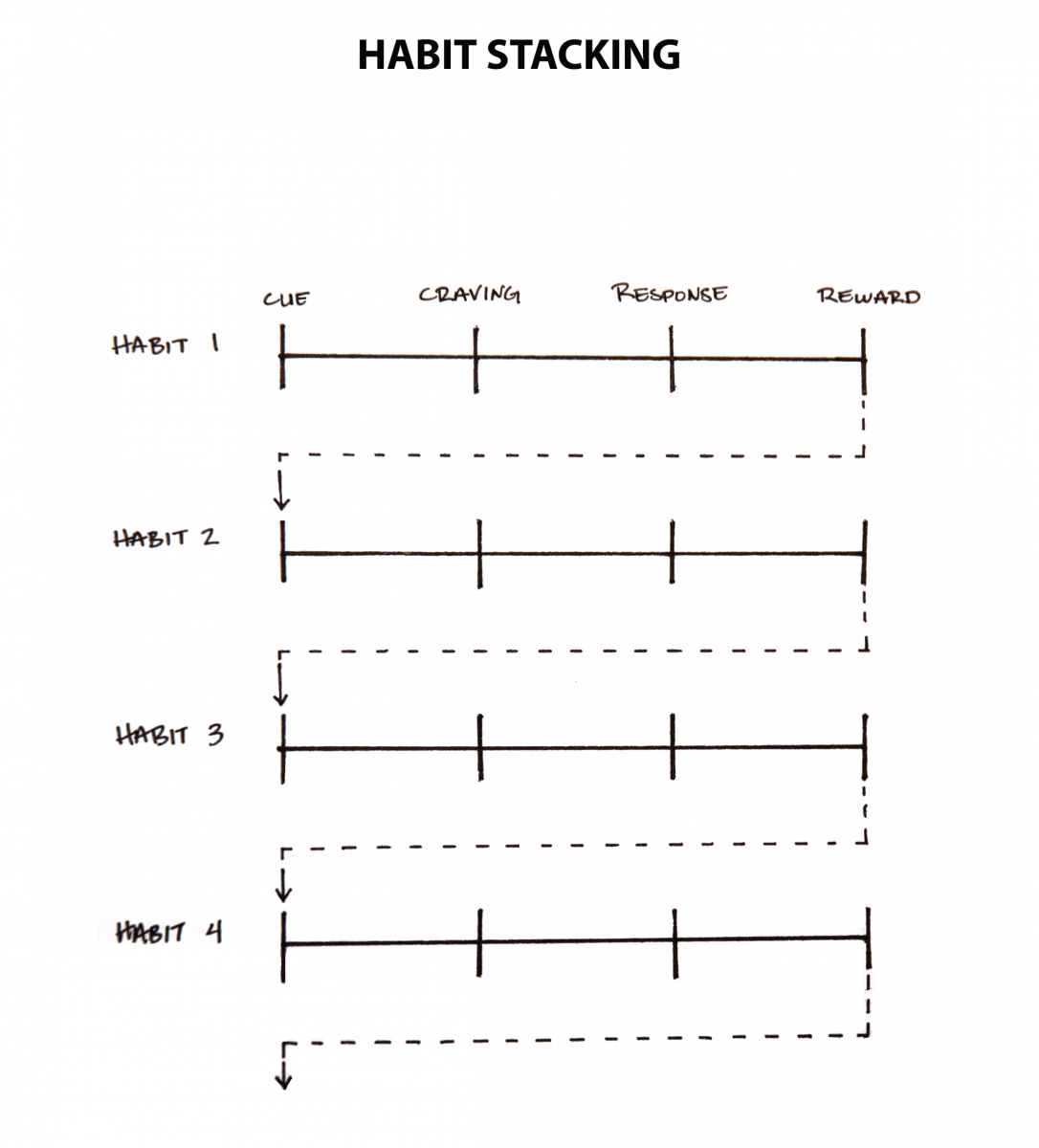is a special form of Implementation Intentions. Rather than pairing a new habit with a particular time and location, you pair it with an old, current habit (the “anchor” [1]).
Unlike an implementation intention, which specifically states the time and location for a given behavior, habit stacking implicitly has the time and location built into it.
The habit stacking formula is:
After/Before [CURRENT HABIT], I will [NEW HABIT].
You can even combine temptation bundling with habit stacking to create a set of rules to guide your behavior. The habit stacking + temptation bundling formula is:
- After [CURRENT HABIT], I will [HABIT I NEED].
- After [HABIT I NEED], I will [HABIT I WANT].
Habit stacking increases the likelihood that you’ll stick with a habit by stacking your new behavior on top of an old one. This process can be repeated to chain numerous habits together, each one acting as the cue for the next.

Finding the right trigger is the key. Habit stacking works best when the cue is highly specific and immediately actionable.